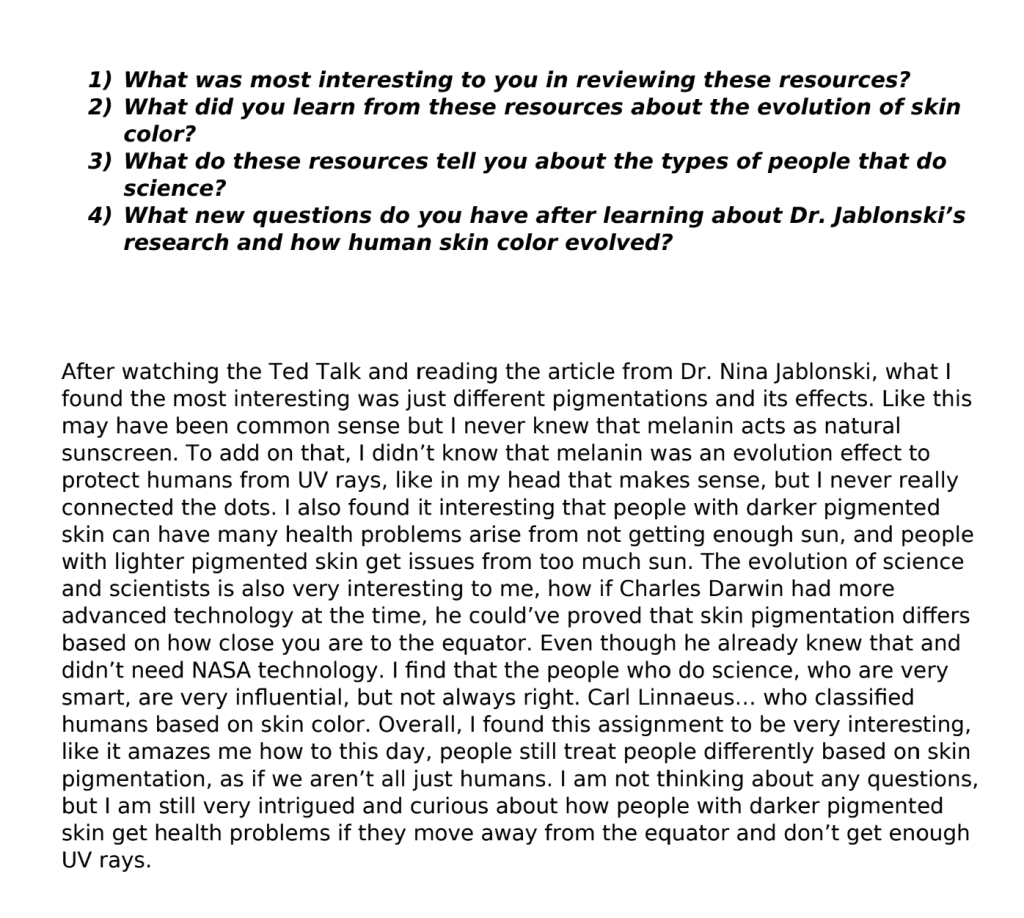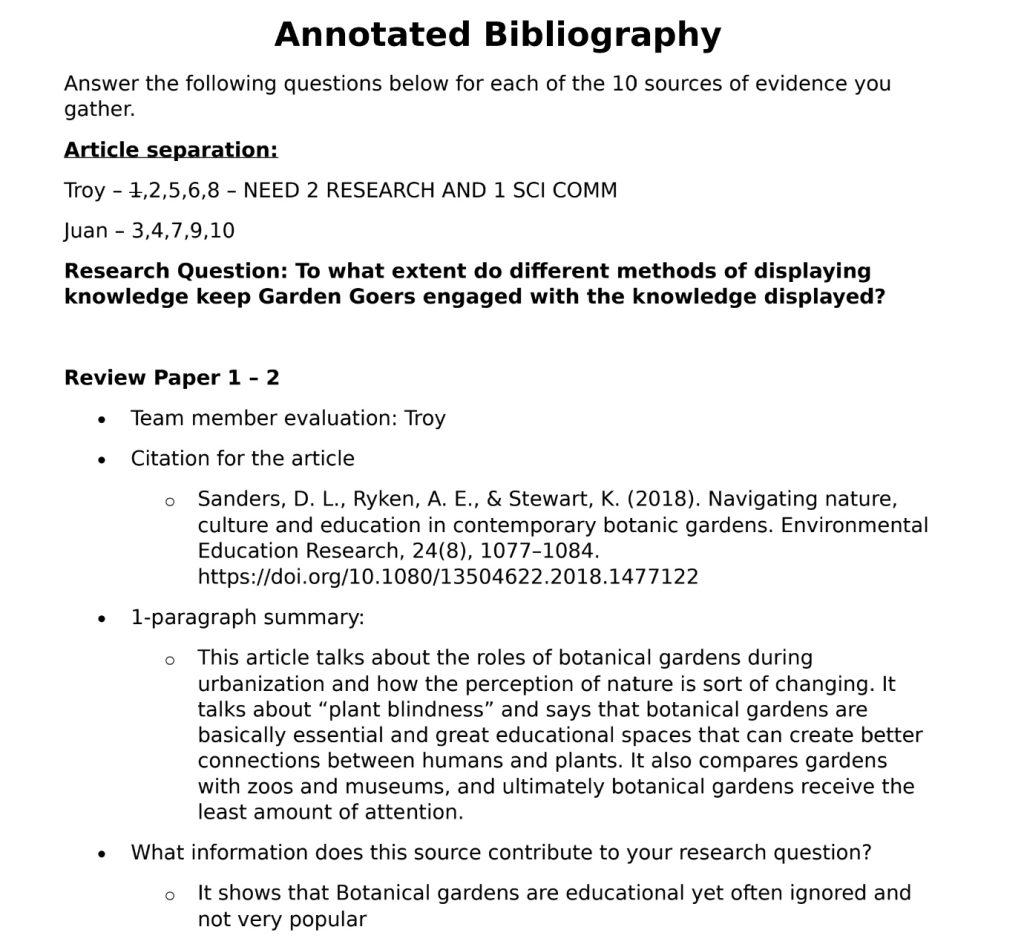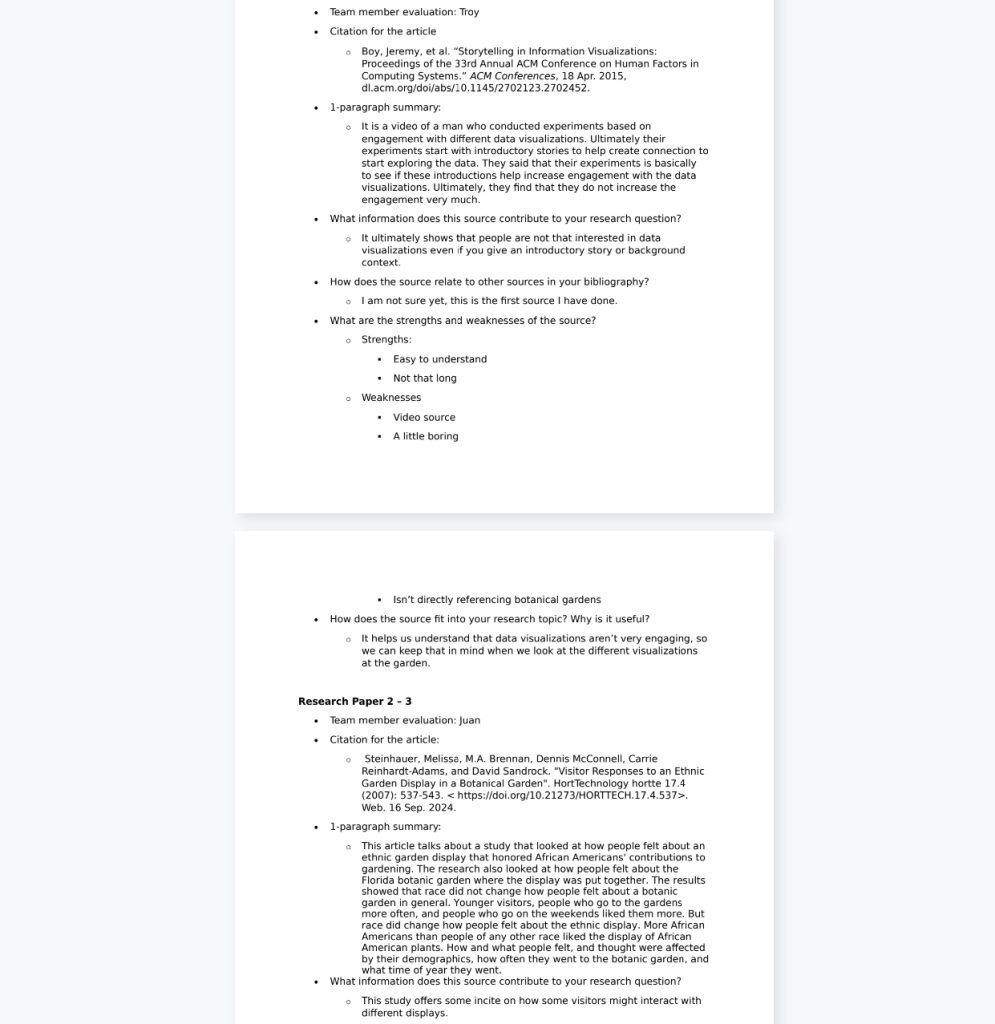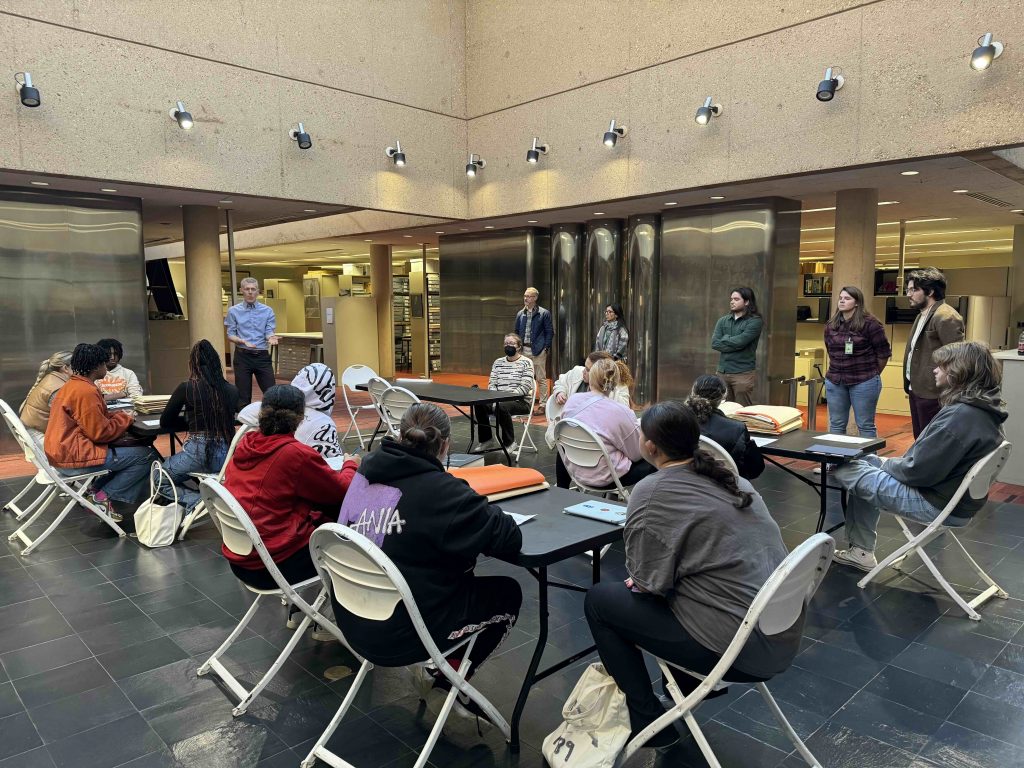Introduction
This semester feels like it is going by so fast. I cannot believe we are basically half way through already. Having both of the Codes classes being 3 hours, once a week, has been an adjustment, but I think I do prefer it over the 3 classes a week. I really appreciate Dr. Aranda and her being very accommodating, especially for a science class, which has never been my strong point.
Now that the semester is over, I am mostly happy with my performance in this class. I wish I did better on the first test, but that is all I can really think of. The research paper was really stressful but in the end felt rewarding after our presentations.
Goal 1 (30%) – Based on (4) Global Learning
Evidence

Above is a screenshot from reflection 3, which displays my learning of global topics.

Above is our final reflection after finishing braiding sweetgrass, and I am just proud of it and think it displays the learning outcome.
Goal 2 (25%) – Based on (5) Information Literacy
Evidence

Above is a screenshot showing Juan (my partner) and I creating a research question and reviewing 10 sources.
Juan-and-Troys-ProjectAbove is our final research project, which is where I reviewed 5 articles to help create a research paper.
Goal 3 (15%) – Based on (9) Problem-Solving Skills
Evidence
Below, I have a very small screenshot of the first exam we had for this class. Which I got a 75% on. I could have done better, but still demonstrates the outcome. Hopefully the final exam will also provide evidence for this outcome.

Goal 4 (30%) – Based on (10) Quantitative Literacy
Evidence

Above is just another screenshot showing that Juan and I are actively working and doing our research for the research project.
Below is again, my final research project as I believe it demonstrates this goal as we looked through several articles that had data that we looked at. We also created our own data based on what we thought it would look like based on the articles.
Juan-and-Troys-Project



